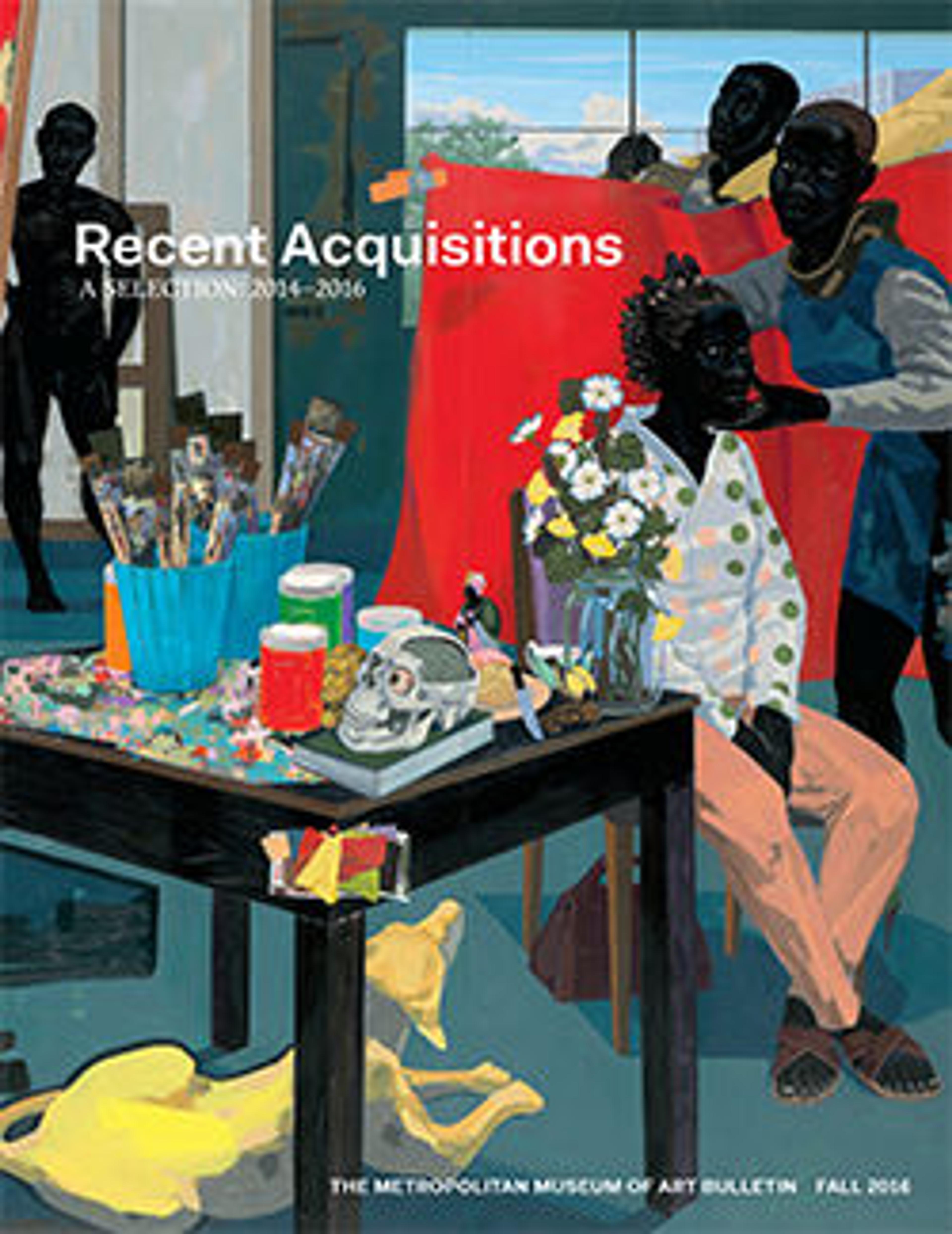Chimney piece with images of Adam and Eve
Eighteenth-century embroideries wider than they are tall, like this one, were called "chimneypieces" because they were meant to be hung above a parlor mantel, a place of honor. The prominent display of this type of schoolgirl needlework signaled that the young lady of the home had been well educated and was ready to become an accomplished wife. The designs found on chimneypieces were usually derived from European print sources; in this case, scenes from the story of Adam and Eve were adapted from prints of paintings in the renowned collection of Archduke Leopold Wilhelm of Austria. The Hapsburg archduke was patron to Flemish artist David Teniers the Younger (1610–1690), who was charged with overseeing the publication of Leopold Wilhelm's collection of Italian paintings. The resulting volume, called the Theatrum Pictorium (1660), was the first illustrated printed collection catalogue. Several editions of the highly influential book were published, and at least one copy clearly found its way to the American colonies. In order to aid the catalogue’s team of engravers, Teniers painted small copies of the works in the duke's collection. Coincidentally, the Teniers's copy of Adam and Eve in Paradise, which that relates to an image in this embroidery, resides in The Met's collection (1975.1.127).
Artwork Details
- Title: Chimney piece with images of Adam and Eve
- Artist: Unknown
- Date: ca. 1760
- Geography: Made in Boston, Massachusetts, United States
- Culture: American
- Medium: Wool and silk embroidery on linen
- Dimensions: 16 × 38 in. (40.6 × 96.5 cm)
- Credit Line: Purchase, Anonymous Bequest, 2016
- Object Number: 2016.120
- Curatorial Department: The American Wing
More Artwork
Research Resources
The Met provides unparalleled resources for research and welcomes an international community of students and scholars. The Met's Open Access API is where creators and researchers can connect to the The Met collection. Open Access data and public domain images are available for unrestricted commercial and noncommercial use without permission or fee.
To request images under copyright and other restrictions, please use this Image Request form.
Feedback
We continue to research and examine historical and cultural context for objects in The Met collection. If you have comments or questions about this object record, please complete and submit this form. The Museum looks forward to receiving your comments.
